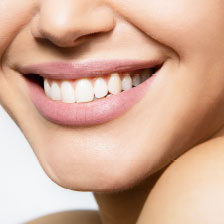 Getting older used to be synonymous with losing your teeth. Think about the ubiquitous stereotype of the elderly person with a toothless grin or a set of dentures soaking in a glass of water next to the bed. Thanks to a contemporary understanding of the causes and prevention of oral diseases, not only do we know that losing our teeth isn’t a necessary part of the aging process, we’ve even identified why people in their golden years used to lose their teeth so regularly. The answer is gum disease and it’s a serious but mostly preventable oral health problem.
Getting older used to be synonymous with losing your teeth. Think about the ubiquitous stereotype of the elderly person with a toothless grin or a set of dentures soaking in a glass of water next to the bed. Thanks to a contemporary understanding of the causes and prevention of oral diseases, not only do we know that losing our teeth isn’t a necessary part of the aging process, we’ve even identified why people in their golden years used to lose their teeth so regularly. The answer is gum disease and it’s a serious but mostly preventable oral health problem.
4 Rules of Gum Disease Prevention
Dentists endorse the following three methods for preventing gum disease, regardless of your risk status:
- Take care of your teeth via a careful, consistent dental health regimen which includes brushing at least twice a day, flossing at least once a day, and rinsing with a dentist-recommended mouthrinse.
- Visit your dentist every six months so he can keep an eye out for the earliest signs of gum disease.
- Quit smoking or chewing tobacco. The regular use of tobacco products is closely linked to a higher instance of gum disease.
- Control your blood sugar if you’re diabetic, pre-diabetic, have had gestational diabetes, or show risk factors for diabetes. Uncontrolled spikes in blood sugar are tied to a higher risk for gum disease.
Treatments for Gum Disease
If you receive a gum disease diagnosis at your next regular dental checkup, don’t despair. Your dentist can recommend a number of treatment options tailored to the severity of your case and your lifestyle needs. For example, earlier stages of gum disease (called gingivitis) can often be treated with better dental hygiene at home and a prescription mouthrinse containing chlorhexidine.
More advanced cases will almost always require a deep cleaning. This two-phase procedure involves removing plaque from below the gumline and smoothing the surface of the tooth roots to prevent more bacterial plaque from accumulating there. In some cases, infected or necrotic gum tissue might need to be removed and topical or oral antibiotics prescribed.







